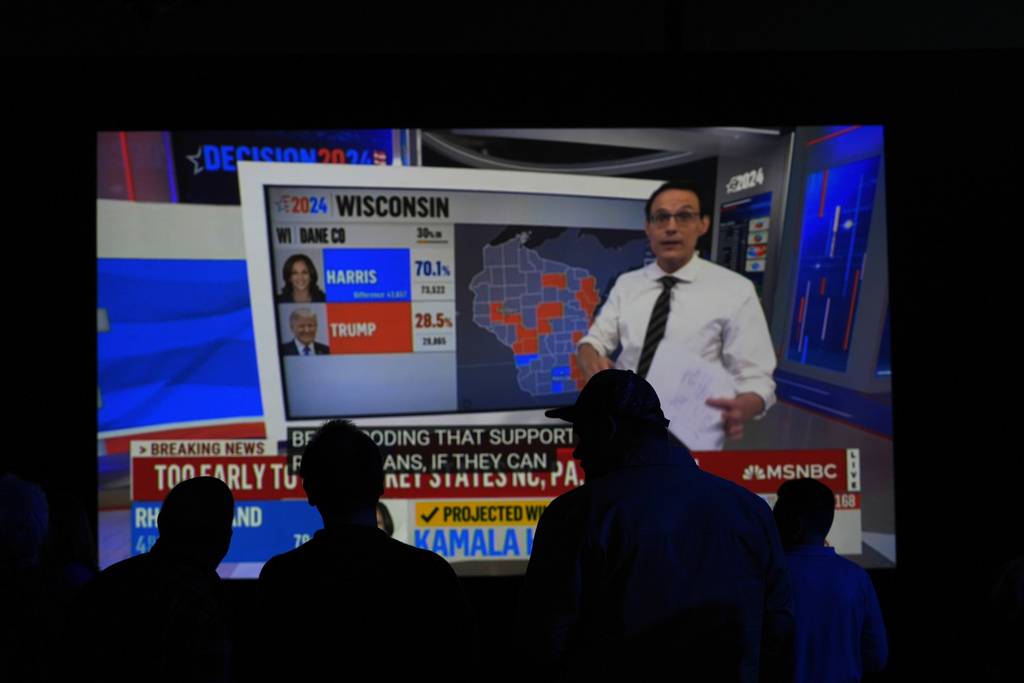2024 Election Night TV Viewership Declines Dramatically \ Newslooks \ Washington DC \ Mary Sidiqi \ Evening Edition \ Election night TV viewership for the 2024 presidential race between Kamala Harris and Donald Trump fell sharply, with only 42.3 million people tuning in. This marks a significant decline from the 56.9 million in 2020 and 71.4 million in 2016. The downturn highlights changing media consumption habits and waning interest in traditional TV news.

2024 Election Night TV Viewership Quick Looks:
- Dramatic Decline: 42.3 million viewers tuned in, down from 56.9 million in 2020 and 71.4 million in 2016.
- Cable News Networks: CNN, Fox News, and MSNBC collectively lost over 10 million viewers compared to 2020.
- Top Network: Fox News led coverage with 9.8 million viewers, down from 13.7 million in 2020.
- Other Networks: ABC captured 5.7 million viewers, NBC 5.3 million, and CBS 3.5 million.
- Changing Habits: The drop reflects a decade-long trend of declining traditional TV viewership due to cord-cutting and increased streaming options.
- Political Context: The 2024 race featured Vice President Kamala Harris against former President Donald Trump, who had a strong showing as early returns came in.
- AP VoteCast Data: Viewer interest mirrored trends of voter sentiment shifts among key demographics.
Deep Look:
The decrease in viewership reflects broader changes in media consumption habits, driven by a decade-long trend of cable and satellite TV subscription cancellations in favor of digital and streaming options. The extent of the downturn raises questions about whether fewer people were interested in the election itself or whether they turned to other platforms for coverage.
Fox News Channel emerged as the most-watched network for the evening, drawing 9.8 million viewers between 7 p.m. and 11 p.m. Eastern, according to Nielsen. This was a decrease from its 13.7 million viewers on election night 2020, when Trump faced Joe Biden. Although news outlets did not officially call the race until after 1 a.m. on Wednesday, Trump’s path to victory appeared likely earlier in the night, potentially affecting how long audiences stayed engaged.
The major broadcast networks also saw fewer people tuning in. ABC led among them with 5.7 million viewers, while NBC drew 5.3 million, and CBS trailed with 3.5 million. These numbers illustrate a decline in the relevance of traditional broadcast television for live political events, as more people opt for streaming services and online sources to stay informed.
This decline in viewership could be attributed to multiple factors, including the general decline in TV audiences as more Americans shift to digital and social media platforms for news. The downturn might also indicate a sense of political fatigue or reduced excitement surrounding the 2024 election. Despite the high stakes of the Harris-Trump matchup, which followed the contentious 2020 election and the tumultuous political landscape of recent years, fewer Americans appeared inclined to watch the results unfold live on television.
Fox News’s continued dominance as the top network for election coverage, even with reduced numbers, reflects the channel’s strong viewership base. However, the sharp declines seen by CNN and MSNBC may signal shifts in audience loyalty or a broader disenchantment with traditional news channels. The viewership data also suggests that while networks still play a crucial role during significant political events, they face increasing competition from digital media.
The drop in election night viewership may prompt major news networks to rethink their strategies for future coverage. As viewers continue to move away from cable and traditional television, networks may need to strengthen their online and streaming presence. Incorporating interactive features and real-time engagement could help draw audiences back or at least capture attention through complementary digital platforms.







